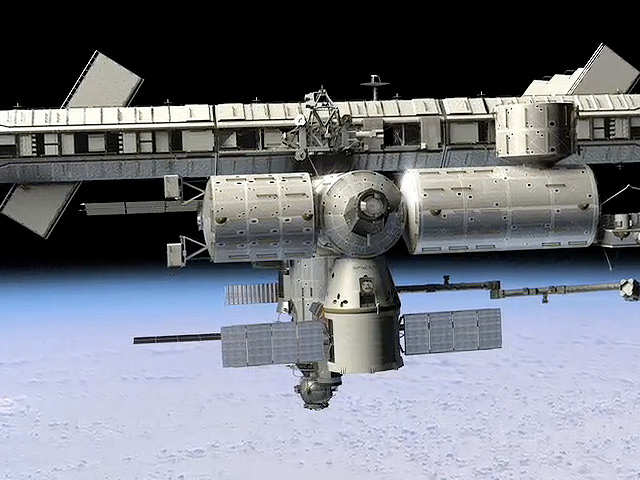Science News
Mission Successful!
May 25, 2012
by Alyssa Keimach

Since November 2, 2000, the International Space Station (ISS) has been a home for astronauts from the United States, Canada, Europe, Japan, and Russia. This orbiting lab also houses many important space experiments, which is why SpaceX—a privately owned rocket company—was hired to deliver supplies to this fundamental sector of our space program.
“The investments made by the United States to stimulate the commercial space industry are paying off,” says Philip McAlister, director for Commercial Spaceflight Development at NASA Headquarters. “SpaceX achieved what until now was only possible by a few governments, and the company did it with relatively modest funding from the government.”
After SpaceX delayed the mission at the last second due to an abnormal pressure in one of the combustion chambers on May 19, the company quickly rescheduled the launch for May 22.
The Dragon cargo capsule launched successfully upon the Falcon 9 rocket, and late on May 23, Dragon flew within 1.5 miles of the International Space Station to test communication via strobe light. The spacecraft then moved 125 miles away from the space station to test its capabilities. It returned around 11:00 p.m. PDT on May 24 to demonstrate its maneuvering capability and begin the rendezvous.
The capture started at 6:56 a.m., when Dragon moved towards the 65-foot box called the “berthing box.” Don Pettit used a robot arm to grapple the capsule, then after bolting Dragon to Harmony (the “utility hub” of the ISS), the berthing process was completed at 9:02 a.m.
This accomplishment heralds a new era in commercial spaceflight, and it also demonstrates how well various teams can work together. The flight was nearly flawless, and the ISS team successfully handled the data they received to complete the mission.
“Today marks another critical step in the future of American spaceflight,” says NASA Administrator Charles Bolden. “Now that a U.S. company has proven its ability to resupply the space station, it opens a new frontier for commercial opportunities in space—and new job creation opportunities right here in the U.S. By handing off space station transportation to the private sector, NASA is freed up to carry out the really hard work of sending astronauts farther into the solar system than ever before. The Obama Administration has set us on an ambitious path forward and the NASA and SpaceX teams are proving they are up to the task.”
The mission hasn’t wrapped up just yet—Dragon is scheduled to depart from ISS on May 31, returning with the ISS’s unnecessary hardware and cargo.
The SpaceX mission’s success is paving the way for future private sector rockets.
A complete timeline of the mission can be found here.
Alyssa Keimach is an astronomy and astrophysics student at the University of Michigan and volunteers for the Morrison Planetarium.